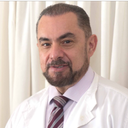I'm considering Breast Implants without a Breast Lift. wanted to know the options for women with saggy breast that do NOT want a breast lift. I want a full D or DD look. I'm not lookin for [RS bleep] star perfect boobs. Just to fill my bras out and feel more womanly. I have lost 160lbs and also pumped for twins that are now 2 yr old I'm a 36 full saggy B/C, I'm 5'7", 165lbs, 5'10". I'm interested in silicone or saline. High profile? I'm thinking 600cchp. The white cloths shows my breast fold line.
Answers (20)
From board-certified doctors and trusted medical professionals
More Breast Implants Questions
See all Breast Implants Q&AWE SEND PRETTY
EMAILS
What’s trending? Who’s turning heads? Which TikTok myths need busting? We’ve got you. No fluff, no gatekeeping—just real talk. Get our free, unfiltered newsletter.









